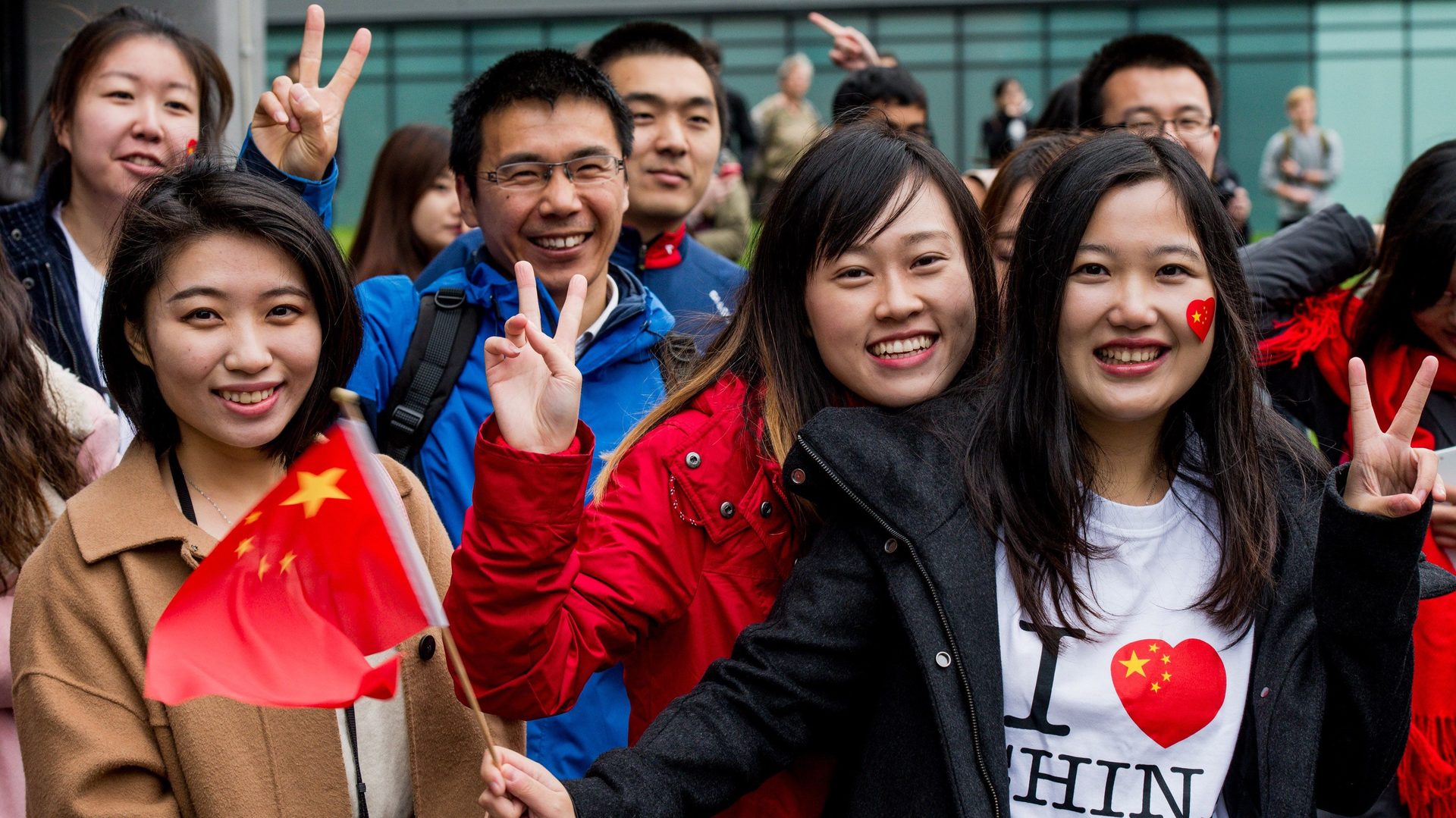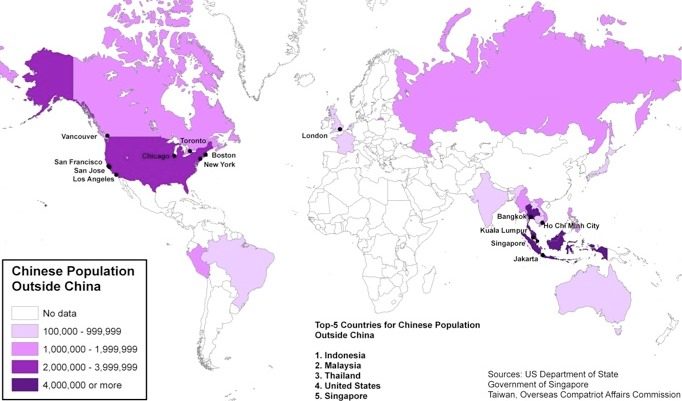
The 50 million Overseas Chinese represent the largest diaspora on earth. Millions more cross the border every year, and everywhere they go, they are shadowed by the Marxist-Leninist state they leave behind. It is not by accident that the phrasing of official statements and publications on the overseas Chinese emphasises the claim that China has on their identity. The assumption is that they belong to China. They are treated as a characteristic of China’s “unique national condition,” placing China in a position of superiority over other countries and granting it legitimacy to symbolically and materially incorporate the overseas Chinese into its socialist modernisation agenda and other national endeavours. This work is central to the activities of the overseas Chinese bodies and is exercised at all levels of Chinese government.

The Overseas Chinese Affairs Office (OCAF) of the PRC State Council is in charge of ensuring their loyalty to China and the ruling Communist Party (CCP). Its activities are known as "qiaowu" (侨务; qiáowù), or “overseas Chinese affairs”, and are regarded as a matter of national interest. Outreach to these ethnic Chinese living abroad is a vital element of China’s soft power strategy, carefully and efficiently organised. OCAF cultivates support in diaspora communities through language programs, cultural events, specialised media, summer camps, “roots-seeking” tours, long-term residence permits, and special business opportunities.
The original objective of the overseas Chinese affairs policy, dating from the 1950s, was to limit consular protection to Chinese nationals abroad. This has quietly changed, with China increasingly helping co-ethnics who are not Chinese citizens. The efficacy of this policy is visible in the way sentiment toward China among overseas Chinese shifted from revulsion during the 1989 Tienanmen Square massacre to fervent pride during the 2008 Beijing Olympics.
The purpose of qiaowu is to rally support for Beijing among ethnic Chinese outside of China through various propaganda and thought-management techniques. The majority of overseas Chinese will be oblivious to qiaowu. Its main target groups are those who are open to and even welcome receiving closer links to China and its foreign service. There is a distinction between Chinese nationals and ethnic Chinese overseas. Beijing is very careful not to be seen as interfering in foreign matters by way of a fifth column, but due to the broad scope of qiaowu, the distinction becomes quite blurred and all ethnic Chinese – including minorities such as Tibetans – are potential subjects of interest. With cooperation from entities such as the United Front Work Department (UFWD) and its offshoots, the State Council Information Office, and other organisations amenable to Chinese influence, “patriotic” overseas Tibetans (those who wish to return to their homeland in exchange for publicly acknowledging their support for Beijing) arrange visits to Tibet on the pretext of cultural or religious exchange. They are briefed on the “development” of the Tibet Autonomous Region and are encouraged to pass on their favourable observations to other overseas compatriots.
While qiaowu includes intelligence gathering on overseas Chinese and their activities, the boundaries between the qiaowu administration and the state become blurred when mobilising overseas Chinese for national interests that go beyond its mandate. In these cases the qiaowu administration prefers to leave aggressive and coercive practices for other agencies to handle. Overseas Chinese are prompted to provide information for China’s development in the form of decentralised micro-espionage, but targets are often unaware that they are the subject of manipulation. Many respond voluntarily through appeals to ethnic pride and sympathies in advancing the motherland.
Appropriating the identity of the overseas Chinese communities by claiming the new migrants as belonging to China, the PRC’s leadership creates a channel to export its own image of a unifying force for the Chinese nation. Migrants become executors of the PRC’s overseas Chinese strategies through the activities of Chinese associations in their country of presence. Every province, autonomous region, and municipality has established their own OCAOs, replicating the activities of a mass organisation which serves in parallel to the official organs of the Central authorities, with the exception of Tibet. Nonetheless other government/private hybrid entities have emerged in this field, for a significant example being the China Overseas Tibetan Association which was active for several years in the early 2010s,
Such organisations are a medium to shift overseas Chinese ethnic identity from their host countries towards the PRC. In particular, the overseas Chinese masses are an essential element of the process of reunification between Taiwan and the mainland, an issue which has gained uppermost importance in China’s domestic and foreign concerns.
Trans-nationalising Chineseness Barabantseva, E., ASIEN 96 (July 2005)
Living Buddha urges overseas Tibetans to be patriotic, CCTV (2009-08-01)
Tibetan dream of Chinese oversea students, China Tibet (2012-07-30)
Chinese in France to become overseas players in realisation of “Chinese dream”, China Internet Information Centre (2013-04-01)
Qiaowu: Extra-Territorial Policies for the Overseas Chinese, James Jiann Hua To (2014)
Writing China: James Jiann Hua To, Wall Street Journal (2014-08-16)
China’s Diaspora Policies as a New Mode of Transnational Governance, Journal of Contemporary China (2016)